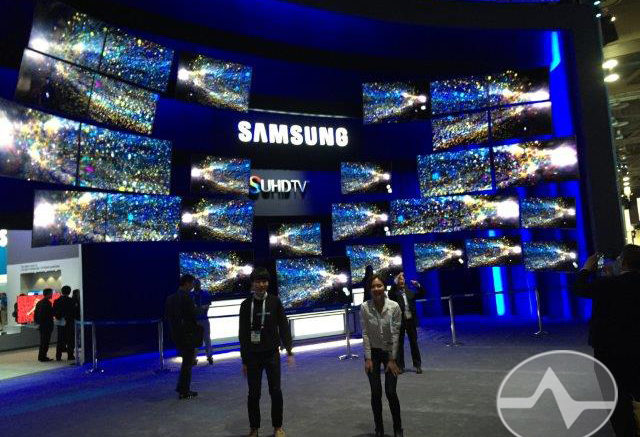Now that you can get a ginormous TV for under a week’s pay, should you? Or has the time for big TVs already passed? I’ve actually been asking this question for about 5 years. (Here’s the proof.) It’s certainly fair to say that big TVs don’t carry the cachet that they did when they cost as much as a midsized car. Back then, they were a must-have for the discerning and very rich home theater enthusiast, who probably went through several generations starting with 3-beam projectors to rear-projection consoles, DLP, plasma and other technologies long since forgotten.
Today’s big TV buyer is probably your average Joe or Jane, and the purchase is most likely made at a big-box or club store.The cost is low, too. Still, the TV is better than anything you could have bought for any price just ten years ago. It doesn’t make sense that there wouldn’t be any demand. Here’s why, though:
4K is great but it’s not “wow.”
With a bigger TV (60″ or greater) you really do need 4K or else everything looks incredibly blocky. But that’s a minimum requirement, not a “wow” moment like it was the first time you saw HD. Things look “like they should” and not “incredible” and there are several reasons. If all your 4K watching is through streaming, you’re watching a mashed up mess of a picture that probably doesn’t look much better than HD. If you’re not watching something with fast motion or fine details, you probably won’t notice the difference. For these and several reasons, 4K hasn’t been adopted as quickly or enthusiastically as HD was in the last generation.
Big isn’t your only choice.
In the world of almost-2020, you don’t go to the TV unless you want to. You take the TV with you, in the form of your phone. People are used to watching small pictures held up close. It’s a much more personal form of entertainment. Truth is, there’s so much out there that you’re not likely to find one show everyone wants to watch and that’s the option you have with a big TV.
I do think that’s likely to change though, as millennials get older and they discover that focusing on something a few inches in front of their faces isn’t as easy as it was.
It’s just not a “statement.”
In my youth, everyone knew one person with “the big TV.” Today everyone has one. There aren’t bragging rights associated with it. That doesn’t mean the TV itself is going away, only that it’s just not a point of conversation, something to take pride in. Today that honor goes to people with the latest premium phone.
So has big TV peaked?
Honestly, I doubt it. I think that if you look at sales numbers for TVs they are probably as strong as they’ve ever been,except for that period in the 2000s when flat TVs first came out and everyone rushed to have one. It’s just something that people have — although of course there are the “cord-nevers,” college students and those just starting out who are avoiding the big TV for cost reasons or just because it doesn’t fit in their lifestyle. They’re an important group, but I don’t see them impacting TV sales so greatly that there will be a problem.
In fact I see big TV continuing to get bigger but becoming more integrated. Rather than the TV in the family room or bedroom being the focal point, it will fade unobtrusively into the decor when not in use and provide information when needed. I think in the future you will really see those wall-sized panels that can be mirrors, information appliances, and entertainment systems all in one. You may think that cell phones will take that role but as TVs continue to get cheaper, there won’t be any reason not to have both.




